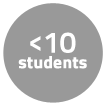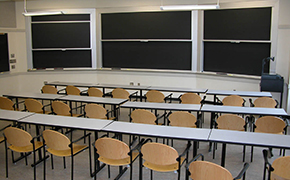Instructor Insights pages are part of the OCW Educator initiative, which seeks to enhance the value of OCW for educators.
Course Overview
This page focuses on the course STS.080 Youth Political Participation as it was taught by Professor Jennifer Light in Spring 2016.
This course placed contemporary youth activities in perspective by surveying young Americans' political participation over the past 200 years. Students investigated trends in youth political activism during specific periods of history, as well as what difference youth media production and technology made in determining the course of events.
Course Outcomes
Course Goals for Students
- Enhance one’s ability to identify what is truly new about the role of “new media” and other contemporary technologies in youth politcal participation
- Understand lessons from history for contemporary activists based on patterns of past failures and successes
Below, Jennifer Light describes various aspects of how she taught STS.080 Youth Political Participation.
Writing Exam Questions Collaboratively with Students
This class reflects the newly developing consensus that we need to revise our scholarly understandings of the meanings of political participation, past and present.
— Jennifer Light
I have asked students to write the exams in all of my undergraduate courses for my entire academic career (almost 20 years). It is especially appropriate given the subject of this class, but I have found that, more generally, it encourages students to take a more active role in their own education, consider how course content is related to their own interests, and figure out exactly what they have learned in the class.
In STS.080 Youth Political Participation, the students generated five essay questions and I posed two of the questions on one of our tests. Toward the end of the semester students proposed that we drop the second in-class test and instead prepare presentations using the historical materials in the class as fodder for a campaign on an issue they cared about. I considered this a very successful effort at youth participation within the confines of the course!
Asking Students to Email Discussion Questions in Advance
I asked students to email me discussion questions prior to each class session, in the spirit of using student interest to guide course discussions, and also to make sure everyone was keeping up with the heavy reading load. It was also an opportunity for students to say, “I am confused, please explain” more privately than in the context of a class discussion. Students’ questions often related historical readings to current events, which was a good way to get into the material in class.
› Read More
Below, Valerie Peng, a student studying mechanical engineering, shares insights about her learning experiences in STS.080 Youth Political Participation.
Writing Exam Questions Collaboratively with the Instructor and other Students
Collaborating with other students and with Professor Light to decide not only what questions would be asked on one of our tests but also what format the assessment would take made my learning expereince more enjoyable. In developing the questions, it felt like we had free reign to apply our understanding of the history of youth political participation to any modern-day cause or movement that we wanted. Even modern history can seem detached from students' lives when we are learning it, but in this way, Professor Light made what we had just learned applicable to something we cared about. Not only that, but it made it easier to remember and to appreciate the history as well!
› Read More
Curriculum Information
Prerequisites
None
Requirements Satisfied
- HASS

- GIR

- STS.080 can be applied toward a Bachelor of Science in Science, Technology and Society (Second Major), but is not required.
Offered
Spring 2016 was the first offering of the course.
Assessment
Grade Breakdown
The students' grades were based on the following activities:
 25% Test
25% Test
 40% Alternative Assignment
40% Alternative Assignment 25% Participation, Including In-class Presentations
25% Participation, Including In-class Presentations 10% Weekly Discussion Qusetions
10% Weekly Discussion QusetionsInstructor Insights on Assessment
Read about Professor Light’s insights about writing exam questions collaboratively with students.
Student Information

Breakdown by Year
Mostly seniors
Breakdown by Major
Mostly science and engineering majors
Typical Student Background
Many of the students had specific political interests, such as race relations on campus; civil rights for gay/lesbian/transgender students; environmental protection and access to health care. Their interests guided the discussions.
During an average week, students were expected to spend 12 hours on the course, roughly divided as follows:
In Class
- Met 1 time per week for 3 hours per session; 12 sessions total.
- Class sessions included small-group student presentations.
- One session included a visit to the MIT Museum to spark discussion about the history of political participation of MIT students, with reference to technology, media, and political hacks.
Out of Class
- Readings
- Preparation for small-group presentations
- Emailing of discussion questions to instructor prior to each class session
- Preparation for the test
Semester Breakdown
| WEEK | M | T | W | Th | F |
|---|---|---|---|---|---|
| 1 |  |  |  |  |  |
| 2 |  |  |  |  |  |
| 3 |  |  |  |  |  |
| 4 |  |  |  |  |  |
| 5 |  |  |  |  |  |
| 6 |  |  |  |  | |
| 7 |  |  |  |  |  |
| 8 |  |  |  |  |  |
| 9 |  |  |  |  |  |
| 10 |  |  |  |  |  |
| 11 |  |  |  |  |  |
| 12 |  |  |  |  |  |
| 13 |  |  |  |  |  |
| 14 |  |  |  |  |  |
| 15 |  |  |  |  |  |
| 16 |  |  |  |  |  |
 No classes throughout MIT
No classes throughout MIT Class session
Class session Field trip
Field trip No class session scheduled
No class session scheduled Student presentations
Student presentations Exam
Exam

 Room 1 of 1
Room 1 of 1 